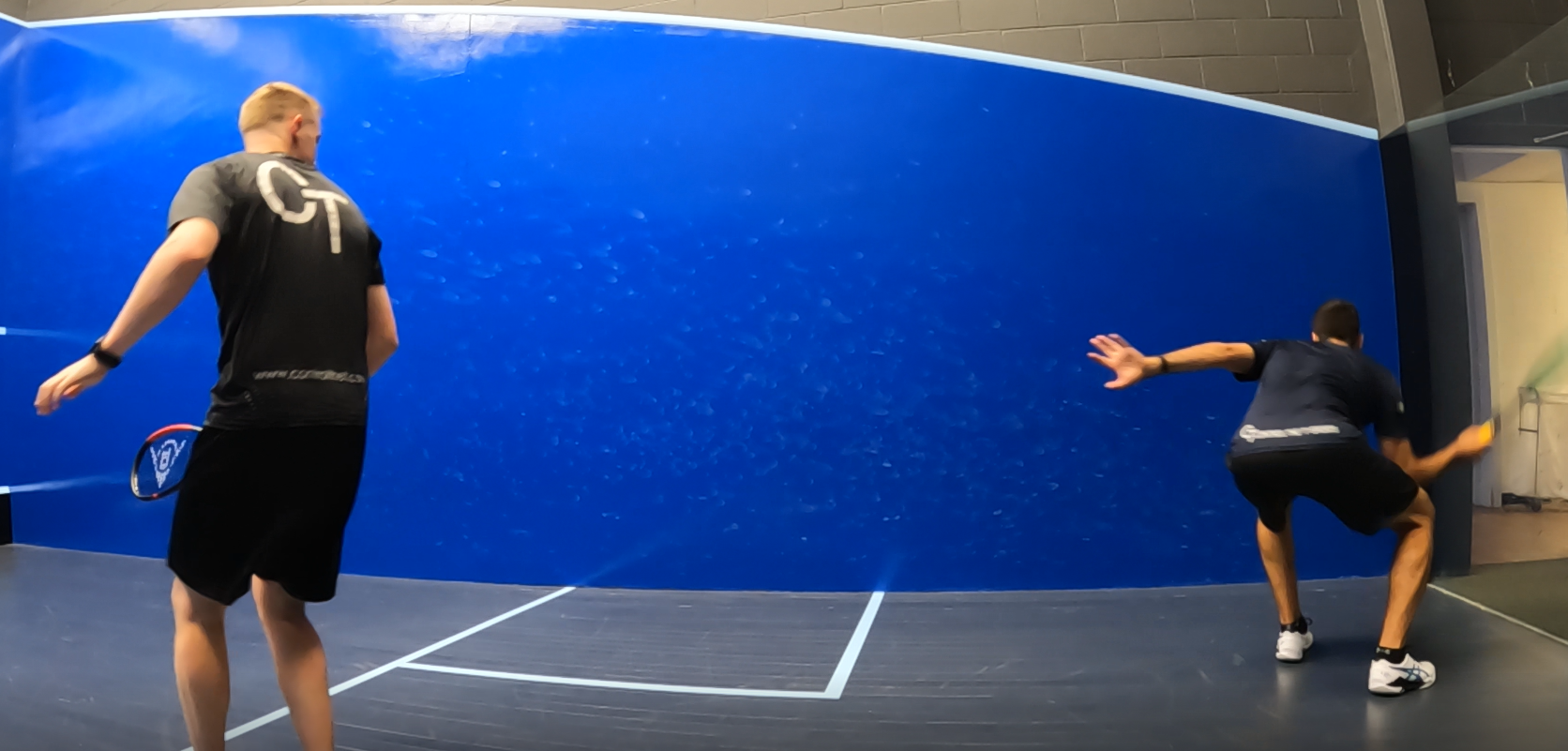Do you ever find yourself in the situation where your opponent has hit a really deep shot to one of the back corners, it bounces against the floor and then against the back wall, and you struggle to return an accurate shot, or, even worse, you can't return the shot and lose the point?
Well, don't worry, this is a pretty common issue that players run into. When coaching juniors and beginners, I always spend a lot of time on this as early as possible in their game. Otherwise, if their opponent manages to hit a really deep shot, the rally is essentially over.
Once you're able to dig these deep shots out, you'll be able to engage in longer rallies and improve your game a lot quicker.
I've got a few technical tips when it comes to digging shots out the back corners, hopefully, these will help you not only retrieve these shots, but, return them with equally accurate shots of your own!
Regardless of what standard of player you are, I really hope these tips can help everyone in some way, shape, or form...
1. Get Low
The very first thing you need to do when you find yourself deep in the back to retrieve a shot is to get low.
If you take a look at the image (underneath tip number 2), you'll see Mathieu Castagnet retrieving a shot out of the back. Look how low his body position is!
The reason for this is so you can really get underneath the ball and apply as much height as possible with your return, so hopefully, you can hit the ball to the back of the court again.
Also, depending on how hot it is, squash balls don't tend to bounce very high, so when a shot hits the floor and then the back wall, it doesn't bounce up much at all. You need to get as low as you can in an almost squat-like position to really dig it out effectively.
2. The Two-Step Motion
There's something my coach taught me called the 'two-step motion' or the 'double-footed movement'. It's quite hard to put into words, but I'll try my best...
Let's say you were moving from the T to retrieve your opponent's drive out of the back forehand corner (like the image below).
As you get nearer the back wall, the idea of the two-step motion would be to put your left foot down first and then pivot your body as the ball bounces off of the back wall and put your right foot down, then, swing through the shot once it's bounced off the wall.
Timing-wise, one approach is to put your first foot down at the same time as the ball hitting the floor on its first bounce and put your second foot down as it hits the back wall.
Some players don't do this in two steps, and almost jump into that squat-like position, so my best advice for this is to just try out both and find out what you prefer.
This basically helps you turn your body towards the front wall and allows you to get some serious momentum behind your shot. As I will mention in tip number 5, you don't have a lot of room for a big swing when you're in the back corner, so you need to do everything you can to get any possible power behind your shot.
You can (kind of) see this in the screen grab below of Team Control the 'T' player, Cam Seth, digging a ball out of the back corner...

3. Wait As Long As You Can
I find this tip to be the biggest game-changer amongst beginner players, as their first instinct, when the ball goes into the back corner, is usually to panic and just swing for the ball as fast as possible when it bounces off the back.
This really restricts your swinging room as well as your timing and shot accuracy.
You'll actually be pretty surprised how long you can wait after the ball bounces off of the floor and then the back wall before the ball hits the floor again for its second bounce.
My coach would often hit feeds for me that would land in the back and he'd say 'wait... HIT' right at the last second. The longer I'd wait the better.
If you can master this, and I highly advise you give it a go, you'll be able to give yourself much more time and many more shot options when the ball bounces into the back corners.
4. Change Your Grip & Use Your Wrist
This will certainly feel a little strange if you haven't tried it before, but this tip really helps with those balls that are really deep in the back and hard to dig out.
The idea is to slide your hand right up to the top of the grip, this gives you a lot more room to use your wrist and flick the shot out.
Since there is there is barely any room for a large swing in this scenario, the only momentum you'll be able to get behind your shot is from your wrist. It's hard to explain why without waffling, but you can access so much more wrist with this altered grip.
Just try it yourself, grab your racquet, hold it in your regular grip at first, and see how fast you can whip through a swing whilst only using your wrist. Then alter your grip to be further up the throat and try it again, you'll be able to get a lot more flick with your wrist!
5. Open Your Racquet Face & Shorten Your Swing
Last, and by no means least, make sure your racquet face is as open as possible. Especially when it's a very hard shot to dig out, the more open your racquet face is the more height you can get onto the ball.
There are situations in the back corner when you'll really struggle just to even get your return to reach the front wall. If your racquet face is open, you've got a good chance of floating your shot to the front wall.
If you do this lightly enough, you'll also give yourself plenty of time to move back into position on the T. However, it's important to note that this is obviously a last resort, as it'll give your opponent a lot of options to punish you with. But, chances are, you'll have no choice other than to play this shot or just lose the rally!
Make sure your swing is short too. I touched on this in tip number 4, if you try to take a big swing, it's likely that your racquet will hit the back wall and force you to make an error.
Shorten that swing and use your wrist.
This article was taken from our On The 'T' Newsletter, if you're interested in receiving more content like this, please feel free to sign up using the subscribe section located at the bottom left of this page (or underneath the article if you're on mobile), thanks!
